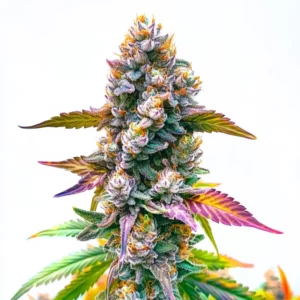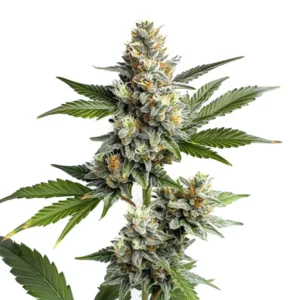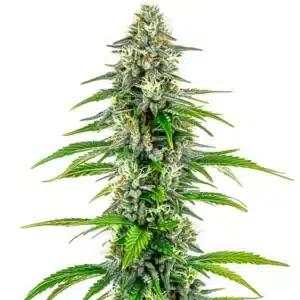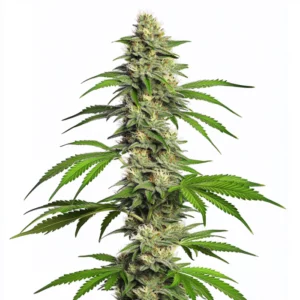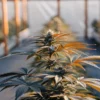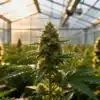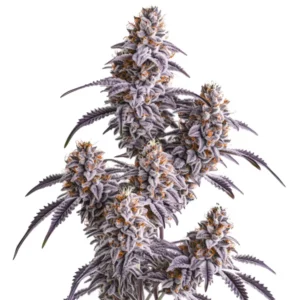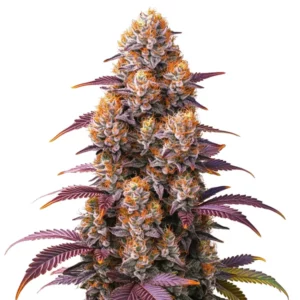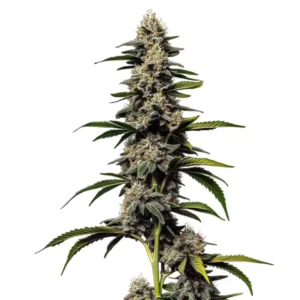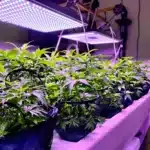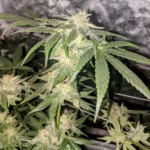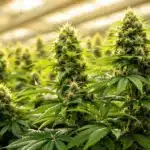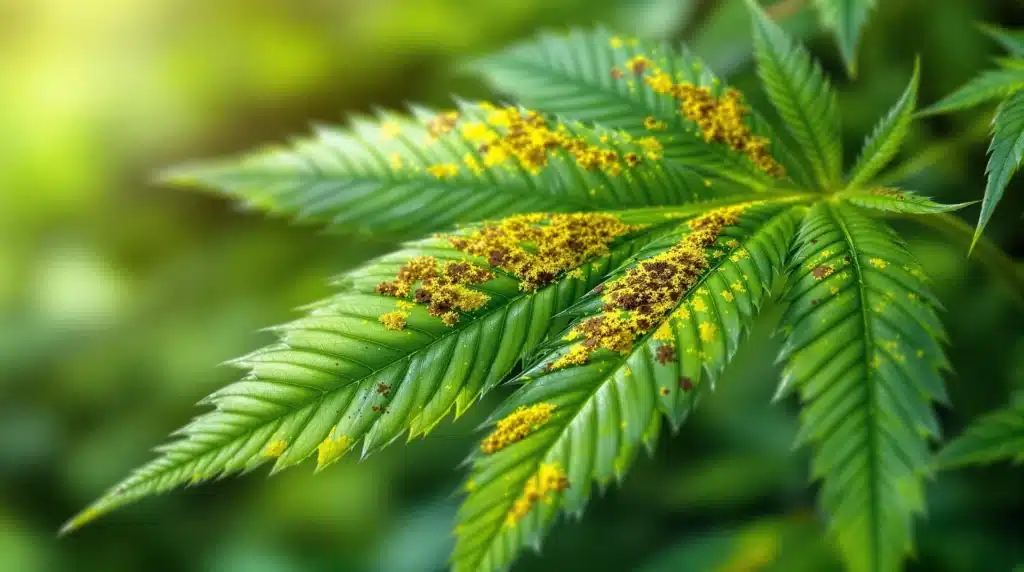
Cannabis Leaves Turning Yellow with Brown Spots
Noticing your cannabis leaves turning yellow and developing brown spots can be quite alarming. These symptoms are clear indicators that something is amiss with your plants. It’s crucial to identify and address the problem early to promote healthy growth. This article will guide you through some practical insights into the potential causes of these issues and how to resolve them effectively.
Causes of Yellowing Leaves with Brown Spots
The reasons behind yellowing leaves and brown spots on cannabis plants are the first step to finding a solution. Various factors can contribute to this issue, including nutrient deficiencies, pest problems, and environmental stressors. Let’s dive into the common culprits:
Recommended Strains
Fat Bastard
|
|
THC | 30% - 38% (High) |
|
|
Type | Feminized |
|
|
Yield | High |
|
|
Phenotype | 50% Indica / 50% Sativa |
Fat Bastard Auto
|
|
THC | 30% - 38% (High) |
|
|
Type | Autoflowering |
|
|
Yield | High |
|
|
Phenotype | 50% Indica / 50% Sativa |
- Nutrient Deficiencies: Missing essential nutrients can result in yellowing and spotting of leaves.
- Pests: Infestations from insects can cause visible damage to leaves, leading to discoloration.
- Environmental Stress: Light, temperature, and humidity fluctuations can significantly impact plant health.
- Watering Issues: Overwatering or underwatering can put plants under considerable stress.
These factors may seem like individual issues, but they can also interact in complex ways. For instance, a nutrient deficiency can make your plants more susceptible to pests because they lack the vigor needed to fend off infestations. Keeping a close eye on your cannabis plants can help you identify the primary causes of stress.
It’s important to remember that healthy cannabis plants are resilient. However, once you start seeing yellowing leaves and brown spots, quick action is necessary to restore your plants’ vitality. Monitoring your plants regularly and their needs will go a long way in preventing these symptoms from manifesting in the first place.
Nutrient Deficiencies
Nutrient deficiencies are among the most common causes of yellow leaves with brown spots. Cannabis plants require a range of essential nutrients, such as nitrogen, magnesium, and calcium, to thrive. When these nutrients are lacking in the soil, the plants often show specific symptoms that indicate deficiencies.
For example, a deficiency in nitrogen can lead to yellowing leaves that begin at the tips and move inward toward the base, which is especially noticeable in older leaves. Similarly, magnesium deficiency typically manifests as yellowing between the veins, with the veins themselves remaining green. Recognizing these signs allows growers like you to take targeted action in replenishing the nutrients and reviving the plants.
To combat nutrient deficiencies effectively, consider using high-quality fertilizers specially formulated for cannabis. Regular soil testing can help you maintain optimal nutrient levels, ensuring your plants have everything they need to grow strong and healthy. A little preventive care can save you a lot of trouble down the road!
Pests
Pest infestations can wreak havoc on your cannabis plants, leading to yellowing leaves and brown spots. Common pests, like spider mites, aphids, and thrips, feed on the plant’s sap, weakening the plants and impacting their overall health. Early detection is key; therefore, inspecting your plants regularly can prevent widespread damage.
When performing your routine checks, be sure to look at the undersides of the leaves and around the base of the stems, as pests tend to hide in these areas. If you spot any unwanted visitors, it’s important to act swiftly. Organic insecticides or neem oil can be effective solutions for managing these pests without compromising your plants or the surrounding environment. The sooner you treat the problem, the better chance you have of keeping your plants healthy and vigorous.
Implementing preventive measures such as maintaining good airflow in your growing area can also help deter pests from setting up camp on your plants. Remember, vigilance is your best defense!
Promos & Deals
Environmental Stress Impacting Your Cannabis Plants
The environment in which your cannabis plants grow plays a significant role in their overall health. Fluctuations in temperature, humidity levels, and light intensity can lead to various stress responses, including the yellowing and browning of leaves. Maintaining a stable growing environment is essential for thriving cannabis plants.
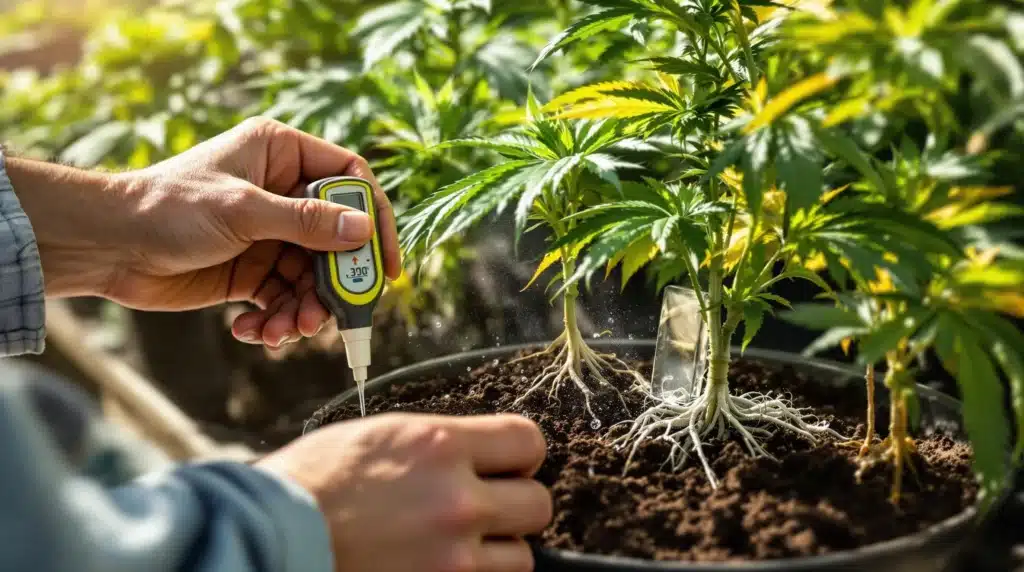
- Light Levels: Both excessive and insufficient light can create stress for your plants.
- Temperature Fluctuations: Extreme temperature changes can hinder how plants absorb nutrients.
- Humidity Changes: High humidity levels can promote mold, while low humidity may cause stress.
Thoughtful management of these environmental aspects is key. For example, providing adequate light for your plants is crucial. Find the sweet spot that allows your plants to absorb the right amount of energy without causing stress. Pay close attention to how your plants respond to environmental changes, as this can guide your adjustments.
Using equipment like timers for lights and thermostats for temperature control can help create a more predictable environment. By ensuring stable conditions, you can minimize the chances of yellowing leaves and brown spots, giving your plants the best chance at health and productivity.
Light and Its Effects
The intensity and duration of light exposure directly influence how well your cannabis plants thrive. If your plants are getting too much light, you might notice burnt tips leading to yellowing and browning. Conversely, inadequate lighting can cause leaves to stretch unnaturally, resulting in discoloration as the plants reach for more light.
To prevent light-induced stress, it’s important to position your grow lights at the appropriate height relative to your plants. Make adjustments as they grow, and consider utilizing reflectors to enhance light distribution. Both of these practices can help ensure your plants benefit from an optimal lighting environment, leading to robust growth.
Temperature Management
Maintaining an optimal temperature is critical for healthy cannabis growth. Ideally, cannabis plants thrive in temperatures between 70°F and 85°F (20°C to 30°C) during the daytime. If temperatures deviate significantly from this range, your plants may display signs of distress, such as yellowing leaves.
Investing in quality thermometers and humidity gauges allows you to monitor your growing environment effectively. If your space tends to heat up too much, consider using fans or air conditioning to keep things cool. In colder conditions, that could mean incorporating heat mats or relocating your grow area for optimal warmth. Tailoring the climate to fit the needs of your plants will foster healthy growth and minimize stress.
Watering Practices and Their Effects
Proper watering techniques are vital to maintaining the health of your cannabis plants. Both overwatering and underwatering can lead to yellowing leaves with brown spots. Finding the right balance in your watering practices is crucial for the well-being of your plants.
- Overwatering: This often results in root rot and can lead to yellow leaves.
- Underwatering: Causes the plant to dry out, making leaves appear crisp and brown.
Adjusting your watering habits accordingly can greatly impact their health. It’s about striking that perfect balance: too much water can drown your plants, while too little can leave them desperate for moisture.
Signs of Overwatering
Overwatering is a common mistake among growers. You may notice yellow leaves that look limp and droopy—indicative that the roots are having trouble absorbing nutrients due to excess moisture. A simple solution is letting the soil dry out before rewatering; giving your plants a break is essential.
Using pots equipped with drainage holes is an effective way to prevent water buildup. Additionally, checking the top inch of the soil is a good practice; if it feels moist, it’s best to hold off on additional watering until it’s dry. By developing a more mindful approach, you can foster a healthier environment for your cannabis plants.
Signs of Underwatering
Underwatering can also lead to stress in your plants. Signs may include brittle, crispy, and brown leaves, especially at the edges. To remedy this, creating a consistent and appropriate watering schedule that suits your plant size and environmental conditions is crucial.
Developing your plants’ hydration needs might take some time, but observing how they respond to schedules will assist you greatly. A general guideline is to water when the top inch of soil feels dry and adjust your frequency based on seasonal conditions and the plant’s growth stage. Striking a balance will keep your plants looking vibrant and healthy!
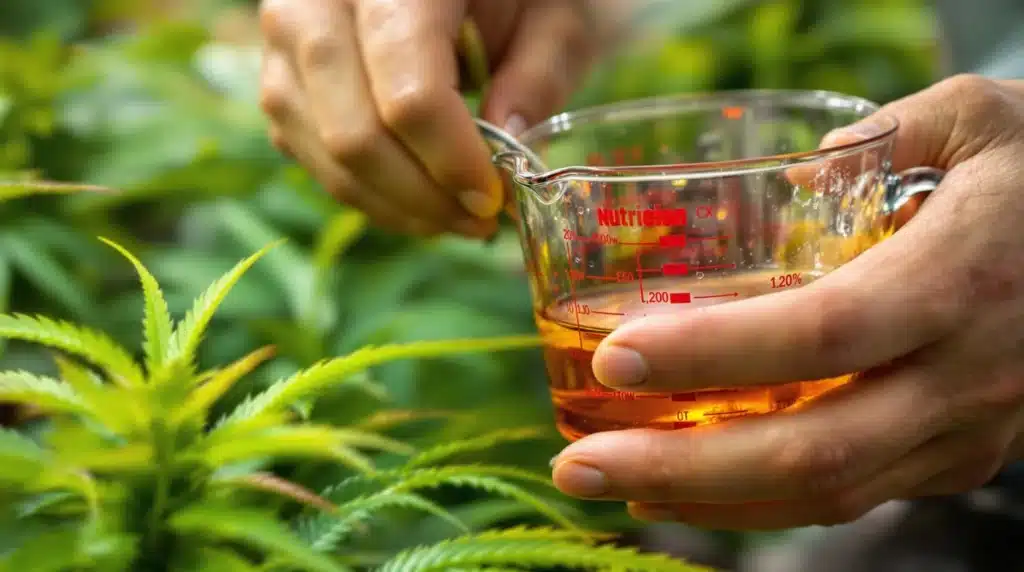
FAQs
Why are my cannabis leaves yellow with brown spots?
This symptom can arise from deficiencies in essential nutrients, pest infestations, or environmental stress factors such as fluctuations in light and temperature.
How can I fix yellow leaves on my cannabis plant?
First, assess your plants for nutrient deficiencies, inspect for pests, and evaluate environmental conditions. Adjusting watering practices and possibly adding organic fertilizers can help address the yellowing.
When should I water my cannabis plants?
Water your plants when the top inch of soil feels dry. Avoid overwatering by ensuring your pots have proper drainage to allow excess water to escape.
Can pests cause yellow leaves on cannabis plants?
Yes, pests can cause visible damage to leaves and contribute to yellowing and brown spots. Regular inspections can help catch infestations early.
What nutrients do cannabis plants need to prevent yellow leaves?
Cannabis plants require nutrients like nitrogen, magnesium, and calcium, among others, for healthy growth. Testing your soil regularly can help you pinpoint any deficiencies.




